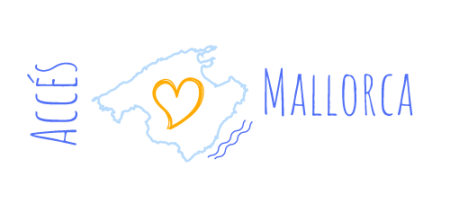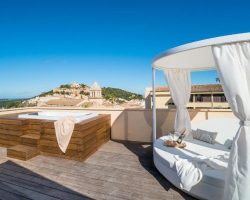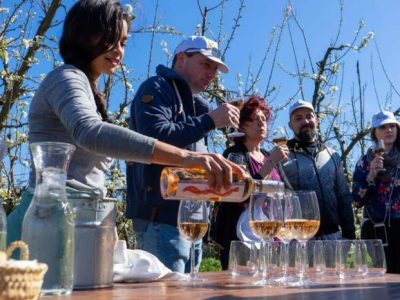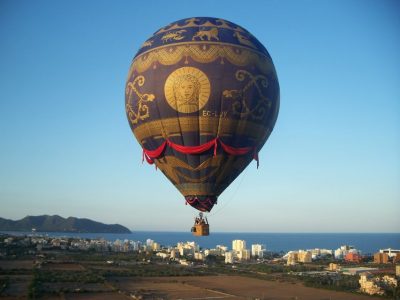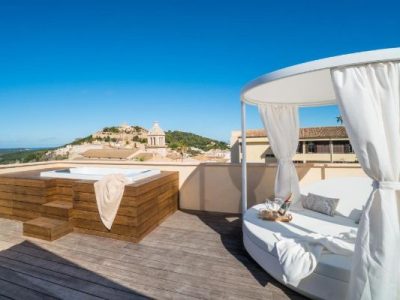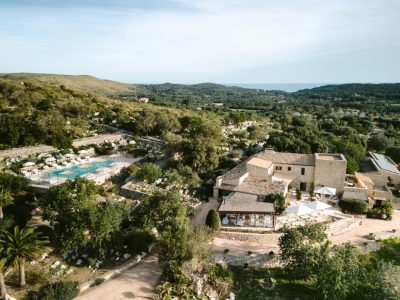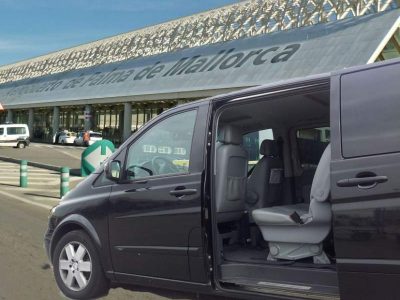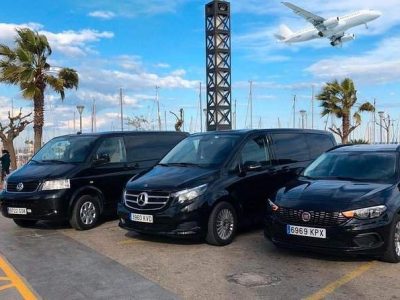All your holiday planning needs in one place, letting you book direct and benefit from official online rates
- Places To Go
- Things To Do
What’s Your Interest?
Traveling with kids
- Blog
Capdepera, Mallorca, Things to do and see, hotels, market
Capdepera is built around the large medieval castle – and probably the area’s biggest attraction – the impressive Castell de Capdepera. In the past, Capdepera consisted exclusively of small houses built within the mighty walls, but has since evolved.
Capdepera’s long and exciting history is manifested in the village’s narrow streets that run up and down the mountain slopes. You will find authentic Mallorcan charm, stunning views and plenty of opportunities for leisure activities.
Moreover, Capdepera is home to the wonderful beach resorts of Cala Ratjada and Cala Mesquida.
- This is where I want to go!
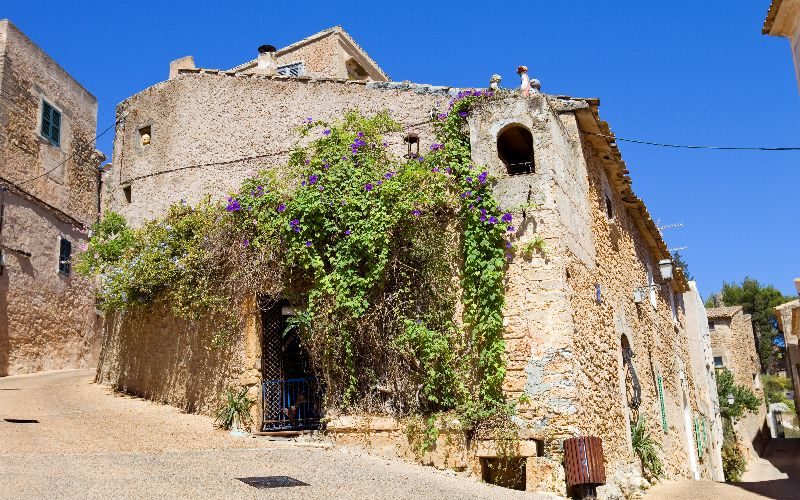
Why visit Capdepera
Things to do in Capdepera
As you will find out, Capdepera is a wonderful area to discover. It has a perfect blend of authenticity, unspoiled natural areas and modern amenities.
Castell de Capdepera
The castle of Capdepera is one of the most iconic constructions and fortresses in this part of the island. It was build around a former watchtower in the early 14th century, and soon after developed and became an entire village. The castle conserves an impressive military architecture and cultural heritage that you owe yourself to experience.
Torre de Canyamel
This stunning fortress was initially built to protect the farmers of the area against raids in the late Middle Ages. Today, Torre de Canyamel serves as an exhibition space, authentic restaurant and monument of cultural heritage.
Torre Cega / Palau de Can March
Former summer residence of Joan March and his wife Elinor, has been transformed to an impressive exhibition space featuring one of the most interesting sculpture parks found on the island.
Cuevas de Artà
The Ártà caves are some of the most impressive and popular stalagmite caves to visit on the island, along with Cuevas del Drach (Dragon Caves) and Cuveas de Hams. Let yourself seduce by the magical yet mysterious artworks of Mother Nature herself.
Enjoy some of the best golf courses on the island
Capdepera is a golfer’s paradise, with 3 amazing courses located with 10 minutes from the town. All three courses (Capdepera Golf, Canyamel Golf and Son Servera Golf) offer a 18-hole challenging course set in stunning surroundings.
Capdepera lighthouse
This stunning lighthouse was built in the middle of the 19th century in one of the most beautiful positions overlooking the entire bay of Cala Ratjada. The lighthouse is a popular destination for photographers, walkers and cyclists who come to absorb the breathtaking views from up here.
Relax on one of the wonderful beaches
Mallorca is home to some of the very best beaches in Europe, thus the popularity of this destination. In the municipality Capdepera, you will find some amazing beaches to visit such as the Font de sa Cala, Cala Mesquida, Canyamel, Cala Gat Son Moll, Cala Aguilla and many others, all perfect for relaxing, beach activities and swimming.
Road cycling
Cycling is by far one of the most popular sports to do in Mallorca. The hilly terrain of the northeastern part of Mallorca and the network of paved roads makes it both fun and easy to discover the charming countryside.
Enjoy a scenic walk in the beautiful area
Capdepera offers numerous great walks and trails to follow. Some of the most emblematic walks in Capdepera will take you to the old lighthouse in Cala Ratjada and to the ancient watchtower of Son Jaumell, both offer amazing views over the northeastern coast.
Cruise the east coast of Mallorca
Head down to the charming harbor in Cala Ratjada and board one of the boats to cruise the beautiful coast. There are a number of different trips to choose from, you can do dolphin safaris, full-day trips, half-day trips, sunset or sunrise trips, all incredibly scenic and beautiful. During most of the boat cruises, you will stop in some of the hidden gems along the coastline where you can go for a swim in the clear turquoise water.
Go on a scuba diving adventure
Visit one of the local diving centers and find the right excursion for you. Together with an instructor, you will dive to some of the most stunning and fascinating places under the surface of the sea. Caves, reefs and valleys full of marine vegetation and colorful creatures awaits in the deep blue, it is a magical and truly memorable adventure.
Discover the Llevant nature park
The Llevant nature park is a protected natural area in the Llevant mountain range. In here, you will find some scenic trails leading about between hundreds of species of Balearic and Mediterranean wildlife. You can walk to some of the most beautiful panoramic viewpoints overlooking the coast, visit the iconic hermitage of Betlem, the ancient military barracks and smell the scents of the unspoilt nature up here, it is a truly magical place to visit for any nature lover or walker.
Discover the area from the saddle
Horseback riding is another very popular and fun thing to do in Capdepera. There are multiple stables offering tours that will take you to some of the most beautiful places in the local area. Particularly riding along the beaches is a magical experience, especially by sunset.
FAQ
Here are the best accommodation options in Capdepera:
Capdepera is located in the northeastern corner of Mallorca, approximately 76 km (~47 miles) from Palma airport. The transfer time by car or taxi is about 55 minutes to an hour.
A taxi from the airport will cost about 90 euros.
If you prefer a more comfortable transfer, consider an air-conditioned private minibus. Book here
The weekly market in Capdepera is held every Wednesday morning, starting around 8 am. If you visit during May, you can experience Mallorca’s only medieval market held at the old castle.
Market and Events in Capdepera
Weekly market in Capdepera
The weekly market in Capdepera is held Wednesday morning in the Plaça de l’Orient in the heart of the village. At the market, you can sample and purchase a wide range of local products such as sweet figs and almonds, delicious olive oil, fruits and vegetables etc. You can also find a selection of the popular palm-leaf crafts emblematic to the area. The market starts around 8 in the morning.
On Saturdays you can find another market in Cala Ratjada, this one with more focus on tourists.
Events and festivities in Capdepera
January
Sant Antoni
Sant Antoni is one of the oldest and most beloved traditions in Mallorca and widely celebrated in most villages on the island. Sant Antoni Abat is protector of animals and therefore have a special place in the agricultural areas of Mallorca. The festivities are held in the evening on January 16, while blessings are held on the actual day of Sant Antoni on the 17th.
Sant Antoni is one of the most traditionbound festivities in Mallorca dating back from early Christian times in the 13th century, and has a special place in the hearts of the Mallorcan people. During the evening, you can experience demons dancing in the streets, fireworks, bonfires, open-air dinners, traditional dances and musical performances etc. This is one of the best times to get acquainted with Mallorcan culture.
May
Medieval Market (BIG ATTRACTION)
Every year during the third week of May, you can travel back to medieval times in Capdepera. The market will be held inside the walls of the castle, where you can meet blacksmiths, shoemakers, carpenters, jugglers, musicians, magicians etc. There will be several hundreds of stands selling all kinds of stuff, a good time to have a good deal on some of the famous llata work (palm-leaf crafts) like baskets, hats, bags etc.
This week is unique in Mallorca, a great opportunity to experience some local culture and learn about the Middle Ages on the island in a fun and interesting way.
July
El Carme
Our Lady of Mount Carmel is the patron saint of seamen, and around the 16th of July she is celebrated in Cala Ratjada. This festival is well-known because of the traditional mass on the pier and the procession of the virgin at sea, escorted to the church by the locals. In addition to this, several activities are organized such as a mini-marathon, traditional Mallorcan dances and a habanera (Cuban dance) concert.
August
Festes de Sant Roc i Sant Bartolomé in Cala Ratjada
The summer festivities in Cala Ratjada is held throughout August with a series of fun events for the entire family. The festivities are aimed for as well locals as tourists and include games, competitions, gastronomic experiences, concerts and exhibitions. There is a special jolly atmosphere in the entire town, a great time to visit Cala Ratjada.
Festes de Sant Bartolomé
Around mid-August, the town of Capdepera celebrates its patron saint of Sant Bartomeu. The week is full of games, sports, workshops, theatrical and musical performances, exhibitions, speeches etc.
October
Mostra de la Llampuga (mahi-mahi fair)
One of the most beloved fish species by the Mallorcans is the mahi-mahi fish (dolphinfish), which is one of the typical species of the Mediterranean. The fair is held in Cala Ratjada, anmd features a series of gastronomical events such as cooking competitions, tapas servings and much more. There will also be live music to set the festive atmosphere.
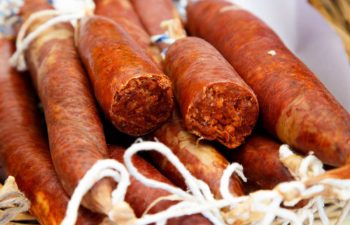
Support Local
Supporting local communities during your travels can have a profound impact. Stock up with groceries locally, stop in an artisan shop or enjoy a refreshment at a restaurant or bar. Now more than ever, these small businesses need support from travelers near and far.
Get to know the area of Capdepera
Get to know the Capdepera area
Capdepera is a village and municipality located in the far most north-eastern part of Mallorca. The municipality comprises the village itself, as well as the popular holiday resorts of Cala Ratjada, Cala Mesquida, Font de sa Cala and Canyamel. It covers a surface of approximately 5,500 ha of land whereof 2,800 are marked as protected areas. There is also about 1,200 ha of special zones for birds.
Typical products
- Palm-leaf crafts
- Lobsters
- Shrimps
- Figs
- Olives
- Cereals
History of Capdepera
Prehistoric period
The history of human settlements in the area dates from the late Pre-Talayotic period around 1,200 BC. From this time, when people lived in caves and built naviforms (vessel-shaped huts), founds have exhibited human presence in the caves of Son Jaumell and in the excavations of the Canyamel naviforms.
From around 1,100 BC, the Talayotic culture arrived in Mallorca and Menorca. This culture was characterized by the tower-like constructions (talayotics) used for lookouts and religious purposes, and walled enclosures protecting these towers. It was most likely early day colonizers from the ancient Greece who were looking for the metals of Europe and to establish settlements outside the Greek world. With a mix of indigenous peoples, the new settlers created fortified villages.
The most remarkable exhibit from this period, is the 4,800 m2 walled enclosure of s’Heretat with its central construction known as Claper des Gegants (Giants’ Mound). Actually, there has been found and excavated more than 41 archaeological sites within the municipal border of Capdepera which testifies an active area. However, there is also the sites of Sos Sastres, Son Barbassa and Puig de s’Hort.
The first Roman conquest
123 BC, Roman general and consul, Quint Cecili Metel, conquered Mallorca from the Phoenicians. The Roman army had been fighting the Phoenicians in the Punic Wars for several centuries and had not yet succeeded in gaining full control of the Balearic archipelago. One of the main reasons for conquering the islands, was to gain control of the Mediterranean sea and the naval routes allowing for more trade and safe travel between Italy and the Iberian peninsula, which was a difficult trip by foot over the Pyrenees.
It was difficult for the Romans to land on the island, as the Mallorcan Slingers (warriors with slings) had proven themselves lethal and able to sink vessels from the shoreline. Moreover, the Mallorcan people had allied themselves with pirates guarding the shores making it even more difficult to get close to the coasts. Eventually, Metel came up with the idea of strapping leather around the ships as a kind or armor plating giving the vessels the ability to reject the projectiles of the slings. After landing on the shores, the Roman soldiers begun a long and arduous game of hide and seek to locate the tribes that had retrenched themselves in the Talayotic villages among other places.
The second Roman conquest
The fall of the Roman empire in the 5th century had meant the fall of Mallorca as Roman territory. However, from Constantinople in the Baix Imperi, Emperor Justinian I made an attempt to reconquer parts of the lost western empire, including the Balearic archipelago. In 534, General Apolinar officially recaptured Menorca and the eastern areas of Mallorca. Justinian made Mallorca a province of Mauritània Tingitana (current Morocco) with capital in Ceptem (current Ceuta). This period is referred to as the “Byzantine”, a period that also brought the introduction of Christianity to the Balearic Islands according to the law of Theodosius I.
Islamic period
When, in 902-3, Issam al-Khawlaní annexed Mallorca into the Emirate of Cordoba, the island was divided in 13 districts, the area of current Capdepera, along with Ártà and Son Servera, comprised the district of “Yartan“. The new Moorish settlers lived in small communities, or in their clans, in so-called “alquerias” (farmsteads) and “rafals” (huts), scattered all over the area. The largest Moorish settlement in this area, was the one of Almudaina, current day Ártà, which was one of only six villages outside the capital of Madina Mayurqua (Palma).
The Christian reconquest
In September 1229, Jaume I of Aragón landed with his 150 ships and 27,000 men at the shores of Santa Ponca, Tramuntana. By the end of the same year, the Moorish governor had been defeated and Madina Mayurqua was renamed to “Ciutat de Mallorca”. After a month of restitution, a campaign to take the Llevant mountains was initiated. More than 20,000 Muslims had fled from the brutal battles in the capital, many of them to the mountains of Llevant and Tramuntana. In March 1230, Catalan Almogavars had defeated all Muslim resistance in the Yartan district.
The first written documentation from the Catalan conquerors of this area, was in the Llibre del Fets (Book of Acts), a report from the conquest campaign and the time following. In the Llibre del Fets, the area is mentioned as “Cap de la Pera” in context of the peace treaty signed by the king and walí (governor), Abū ‘Abd Allāh Muḥammad, and bailiff, Abū ‘Uṯmān Sa‘īd ibn Ḥakam, of Menorca, in 1232. This treaty allowed Menorca to remain under Muslim dominance, but tributary to the kingdom of Mallorca. The treaty is preserved in the Bibliothèque Nationale de France in Paris. As written in the Book of Acts, King Jaume had bonfires lit all over on the hilly headland making it look like an entire army was preparing for battle and conquest of Menorca. The Muslim messengers from Menorca sailed to Capdepera and was told that the king was ready to engage any time. The Muslims of Menorca knew they would not be able to win a battle, and therefore agreed to meet with the king who then saved a great deal of expenses and men.
In 1232, the king distributed the lands of Mallorca among knights, counts and bishops, all some who had supported him or participated in the campaign. It was all written in the Llibre de Repatiment de Mallorca (Book of Division of Mallorca), stating that the lands of Cap de Pera was given to the families of Nunís and Montsó. Nunis was given the lands of current day Capdepera and Montsó the lands of current day Canyamel.
The foundation of Capdepera
In 1276, King Jaume I died leaving the kingdom of Mallorca to his son, Jaume II of Mallorca. At this time, a number of houses had already been built and inhabited on and close to the hill of Capdepera. In the year 1300, he promulgated a set of ordinances constituting twelve fortified villages on the island, so-called “bastides” following French contemporary style, whereof Capdepera would become one of these. With the foundation of the fortified village, the Lleuda law was too executed, meaning the village would have the rights to trade at a local market and import products at a fixed tax rate.
The construction of the fortified village began soon after, and in 1323, the first primitive church of Mare de Déu de la l’Esperança (Our Lady of Hope) was inaugurated at the highest point. The fortified village was constructed around the Torre de Miquel Nunis, a rectangular shaped tower remaining from Muslim times, which had the mill tower of Cofeta added. The walls was constructed in a triangular shape following the philosophy of honoring the Holy Trinity. The four watchtowers of sa Boira, ses Dames, d’en Banya and dels Costerans were set up in the eastern and southern corners to guard the most vulnerable sides.
The walled enclosure was finished in the late 14th century (1386), including the Ronda road on the exterior side of the walls where soldiers would guard the castle. The main entrance portals are were those of Portalet and Portal del Rei Jaume, the latter from the early 18th century, both featuring machicolations, garret and guardroom.
Initially, the “Gabellins” (people of Capdepera) were hesitant in moving into the walled enclosure, but an agreement was made that they could keep living outside the walls, but had to sleep inside.
The congregation grew, and in 1352, Pere III of Catalonia-Aragón actually granted the village permission to segregate from Ártà, however this did not happen until the 19th century due to a range of internal conflicts.
The name came from the Latin “Caput Petrae”, which in medieval Catalan was interpreted as “Cap de Pera” and translated to Spanish, “Cabo de la Piedra”. In English, the name is translated to “Headland of Stone”.
At the same time, in the valley of Canyamel, a tower was set up to provide shelter for those who lived in this area during times of raids.
Threats from the sea
The village started to unfold on the slopes outside the fortified walls. During the 16th century, especially coastal areas of Mallorca was facing new threats. The Ottoman empire was on a campaign to expand, and the Balearic archipelago was a strategic goal to gain dominance in the Mediterranean. The Ottomans had allied paid Algerian, Tunisian and Berber privateers, and in 1558 Ciutadella, Menorca, was ruthlessly attacked and suffered losses of almost 3,000 people. This event was a clear warning to the Gabellins that the enemy was not just close, but dangerous as well, and that precautions had to be taken.
The walled enclosure of the castle was significantly enhanced to provide an extra layer of security for the inhabitants of the village. The people lived scattered in the area and needed a safe place to take shelter during attacks. Moreover, several watchtowers was erected in the hilly landscape of the headland such as the Torre de Son Jaumell in 1566 and the Torre de Esbuceda in 1700. The towers were not equipped with a battery, but solely used for observing and alarming. Additionally, the Torre Cega was created in what we know as Cala Ratjada day, at the spot where the Can March palace is found. Torre Cega got its name from its stealth position behind the pine trees, “Cega” means “blind“. Using fresh wood, the guards would light a bonfire and send smoke signals notifying the neighboring towers and so on until the signal reached Capdepera and the bells could alarm the people to arm or seek protection.
In 1715, a delegation of dragoons was appointed by the governor to stay in the castle to protect Capdepera. For this purpose the Governor’s House was built inside the walled enclosure.
The disappearance of external threats
From the beginning of the 1800’s, when the French captured Algiers, most of the threats from North African privateers disappeared. The village outside the walled enclosure started to develop even further and the castle became obsolete. In 1854, the last delegation of dragoons left the castle for good and only about 10 families lived inside, while at the same time, more than 200 houses had been built outside the castle.
Between 1830 and 40, the new parish church of Sant Bartolomeu was erected as the village and congregation had grown at this point.
Cala Ratjada and the new economy
Capdepera expanded throughout the 19th century, and in 1858 it became an independent municipality segregating itself from Ártà and Son Servera. The fishing village of Cala Ratjada grew significantly in population and importance during the 19th century, a monument is the beautiful lighthouse of Capdepera from 1861 situated at the most privileged spot on the hills overlooking Cala Ratjada. On clear days, you can see the coastline of Menorca from the lighthouse.
Another reason why Cala Ratjada started to attract attention, was because Leonor Servera Melis, wife of Juan March i Ordinas (founder of Banca March) born in the house of Ca’n Piricus, Capdepera, loved the area so much that she had the amazing manor of Palau de Can March constructed here. Soon after, more prominent families started spending their summer holidays in Cala Ratjada. The village and harbor area was extended and the beach of es Carregador was established to accommodate the affluent summer guests.
From the first third of the 20th century, Cala Ratjada really started to develop. The Passeig Colón was created and on this, the Na Ferradura shipyard. The wharf of sa Pedruscada followed with a series of barns to store cargo and goods created next to it.
The strong growth in both population and commercial activity affected the economy and demographics significantly in Cala Ratjada and Capdepera. By the late 1960’s, with the tourism boom, Cala Ratjada was one of the most important tourist destinations in the Mediterranean.
The 19th and 20th centuries also introduced the craft of palm-leaf works (llata), an emblematic socioeconomic factor of the area. To this point, Capdepera had relied solely on the traditional agricultural activities such as livestock (pigs and sheep), olives, figs, almonds and cereals.
Today, the economy is predominantly based on tourism from Cala Ratjada which is still one of the most popular summer holiday resorts in the north-eastern part of Mallorca. However, the areas of Canyamel, Font de sa Cala and Cala Mesquida make up a significant part of the tourism of Capdepera.
Practical Info
Useful Numbers
Emergency: 112
National police: 091
Local police: 092
Guarda civil: 062
Fire: 080
Maritime emergencies: 900 202 202
Town Hall: +34 971 82 95 95
Public Transport
Bus lines: 411, 422, 423, 424
Power Supply
220V
